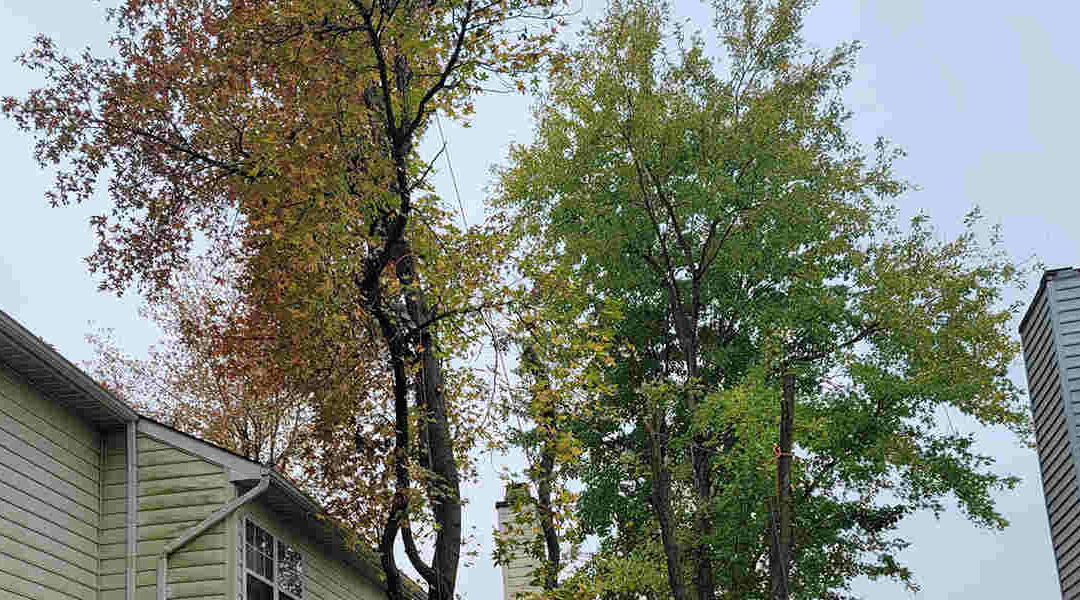For those with a green thumb, you may encounter the annoyance of leaf curling. This can be frustrating, especially when you don’t know what causes leaves to curl. No need to stress — Danville’s premier services will explain all the reasons for leaves curling and what you can do to fix it.
What Is Leaf Curling?
To explain, leaf curling can happen for a wide variety of reasons. For one, it can be a symptom of malnutrition or a bigger underlying issue. The process of leaves curling can also be a natural process that occurs during the growth state of plants and trees.
There are two different types of leaf curling.
Upward Curling
Upward curling, commonly referred to as “leaf cupping,” is when the leaves curl towards the sky. This often means that the tree is experiencing a lack of water, was exposed to high temperatures, or received too much direct sunlight.
Downward Curling
Downward curling, commonly known as “leaf clawing,” occurs when leaves curl toward the ground. This is typically caused by overwatering, nutrient deficiencies, or root rot.
Reasons Why Leaves Curl
If your tree’s leaves are curling, several issues could be the culprit. Here are some of the most common:
Lack of Water
One of the main reasons for an upward curl is the lack of water. When your trees are not receiving an ample amount of water, the leaves begin to curl in order to conserve water. If this is the case, check the soil to see if it is dry.
Then, simply give your tree a deep soak with a hose. Trees may need a few days of consistent hydration before the leaves return to their normal state.
High Temperatures
If your tree experiences high temperatures, it will show upward curling. When temperatures surpass your tree’s comfort level, its leaves will begin to curl to protect themselves from extreme temperatures.
While you can’t exactly lower the outdoor temperature, you can help the tree cool down by watering the base of the tree and misting the leaves.
Direct Sunlight
Upward curling can also result from too much direct sunlight. When trees are exposed to excessive direct sunlight, leaves begin to curl to protect themselves from the invasive heat. Again, you can help combat this by thoroughly watering your tree.
Overwatering
Overwatering is another common reason that causes leaves to downward curl. When the ground retains moisture caused by clay-heavy composition or flat land, the roots become waterlogged, depriving the tree of oxygen.
Lack of Nutrients
When trees lack nutrients, the leaves begin to curl. This typically happens when trees have a poor pH balance. Trees require moderately acidic to neutral soil to survive. When the pH or alkaline levels are overly acidic, it can lead to nutrient imbalances.
Poor Soil
Trees and plants need good nutrition to live. Most of their nutrition comes from the ground. If the soil has issues, your tree will struggle. For example, if the soil lacks nutrients, the leaves will begin to curl downward to conserve energy.
You may need to enlist a professional arborist to check the soil for any deficiencies and apply a well-balanced fertilizer. If the soil is not properly maintained, the tree can become stressed. Stress is one of the main causes of tree burl and other issues that put your tree’s health at risk.
Contact Your Local Arborist Today
Are you wondering what causes leaves to curl on your tree? Hernandez Complete Tree Company Service LLC can help you understand why your leaves are curling — and fix the problem. Call us today at 240-299-4639 to find out more information about how we can help you.


